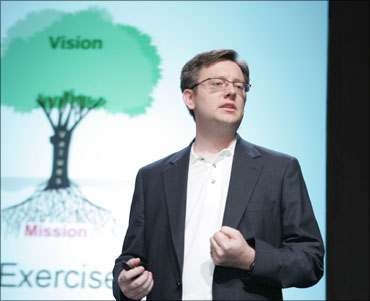
Infosys Technologies, India's second-largest IT services firm, might well have an insider as its next chairman when chief mentor N R Narayana Murthy retires in August 2011, once he turns 60.
While the final call will be taken by the board in January, Infosys managing director and CEO S 'Kris' Gopalakrishnan recently hinted that Infosys has enough 'depth of leadership'.
Speaking to Business Standard, he said: "If there is somebody coming from outside, either there is a failure inside in identifying the right leaders, or it's a new area where we don't have the expertise inside."
So how does Infosys groom its future leaders? The process is long-drawn, meticulous, and in consonance with the company's stated vision: 'To be a globally respected corporation that provides best-of-breed business solutions, leveraging technology, delivered by best-in-class people.'
This is where Matt Barney, head, leadership development, Infosys Leadership Institute, Infosys Technologies, steps in.
He is an expert on lean Six Sigma, leadership development, psychometrics, human capital management, risk management and simulations. As the head of Infosys Leadership Institute, he is responsible for research, selection, development, and succession of senior and high-potential leaders in the organisation.
Says Matt Barney: "Our scope is the top 750 people, who eventually we would like to grow into the senior-most leaders of Infosys. Our goal as an ILI is to grow future CEOs, CFOs, and other 'destination jobs', and at the same time there may be occasions where we hire lateral leaders."
Barney has vast industry experience with the likes of Intel, AT&T, Lucent Technologies and Motorola. He has published and presented papers in reputed journals and is now authoring a book titled, Leadership at Infosys.
In an email interaction with rediff.com, Barney explains the process adopted at Infosys to groom leaders for the future. Excerpts from the interview:
Click NEXT to read on . . .
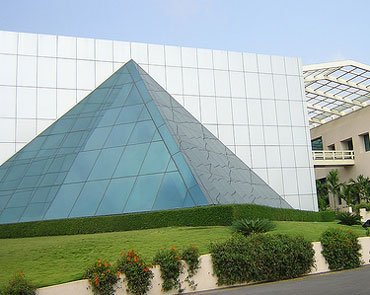
How does Infosys define leadership and succession planning?
We define leadership from nine perspectives of the behaviours leaders must do well to create value; and also in those factors that drive their behaviours.
Succession planning is addressed in two ways. At the individual leader level we personalise the development needed for each 'Tier' leader, our high potentials. At the enterprise level, we look at the probability of promoting leaders into more senior positions, and enterprise-level investments to ensure this is sufficiently high.
One of our research areas is around interdisciplinary ways of predicting and de-risking both performance and succession probabilities.
Which areas of expertise and qualities does Infosys seek in potential leaders?
We look at the distal attributes for potential; factors like personality traits, values, interests, and abilities that are stable over time.
We've had a long-standing perspective that leaders must demonstrate performance and a passion for continuing to grow for us to differentially invest in them. We also care about the degree to which they have skills, mental models and knowledge relevant to the business.
Click NEXT to read on . . .
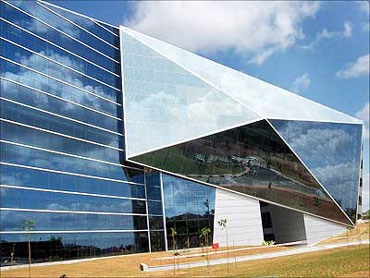
What is the nature of leadership required for an IT company, like Infosys?
We are fortunate to have a history of visionary, successful leadership. And our business strategy continues to evolve, so our leader behaviours and attributes will evolve to continually add more value to our customers. As an Institute we're very focused on helping leaders increase their relevance to clients by solving business problems, rather than our traditional value proposition of labour arbitrage.
What is the size of the pool of leaders who will steer Infosys in the future? Will the CEO also emerge from within this pool?
Our scope is the top 750 people, who eventually we would like to grow into the senior-most leaders of Infosys. Our goal as an ILI is to grow future CEOs, CFOs, and other 'destination jobs', and at the same time there may be occasions where we hire lateral leaders, like myself.
We hope that this will be relatively rare, if we're doing a good job growing leaders to a sufficient level that we have deep bench strength.
Click NEXT to read on . . .
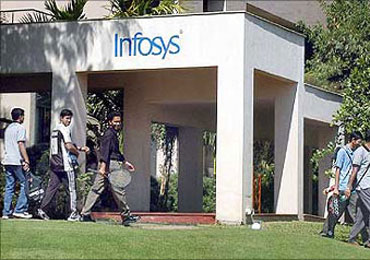
How does Infosys groom its future leaders?
We strive for relevance to each leader through ILI's assigned 'counsellors' who interpret assessment and business results and recommend appropriate interventions.
We call the portfolio of possible investments to consider for a given leader and her/his unit a 'roadmap' and the specific ways in which we develop them 'vehicles'.
Roadmaps match our leadership model, such as strategic leadership; and vehicles include experiences, books, courses, stretch assignments, and simulations.
We're very keen on promoting experiential learning and also virtual reality simulations as a safe place for leaders to practice difficult and dangerous skills like CXO selling.
Click NEXT to read on . . .
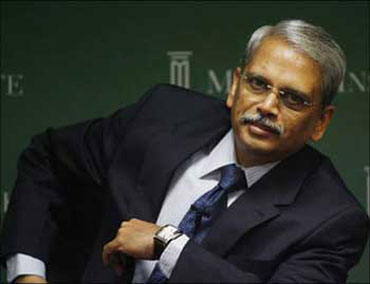
What is the role of the Infosys Leadership Institute towards this goal? What exactly goes on here?
We support the selection of leaders (laterals and internal high potentials), and their development through counsellors who personalize our recommended investments in themselves and their leaders.
Second, we aggregate these data to recommend enterprise-level investments to the board, and support de-risking succession. Our counsellors, including myself, work 1:1 with their assigned leaders on a regular basis. They, and our assessment experts, anchor 'roadmaps' to ensure scientific rigour and appropriate grouping for the various levels of leaders.
I work with the board on Tier leader selection, and annual aggregation analyses to consider for investment.
Click NEXT to read on . . .
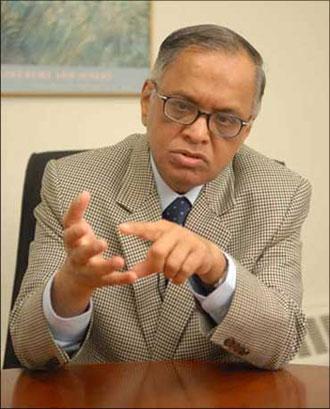
What are the parameters on the basis of which Infosys identifies potential leaders from within its ranks?
We use a holistic approach based on the latest research on leadership, and have created our own psychometrics that leverage computer adaptive with multi-source (360 degree) surveying.
These measure the distal attributes (personality, traits, values, interests), proximal attributes (knowledge, skills, mental models), and also leader behaviours in our Infosys leadership model.
One area of research of mine is a new interdisciplinary approach to balancing the cost and benefit of stringency of parameter thresholds, called 'cut scores' for selecting leaders into tiers.
Early evidence suggests that it improves the fairness and utility of the procedure for identifying tiers, and we will be rolling it out later this year to invite new Tier leaders to join the ILI process.
How has Infosys built the right culture for future leaders to thrive in?
We're fortunate to have a deep commitment to both our core values of C-LIFE (Customer, Lead by example, Integrity & Transparency, Fairness and Excellence) and a leadership team with a long-term commitment to development.
Mr N R Narayana Murthy, for example, calls himself 'chief mentor' and role models growing the board and our Tier 1 leaders. The same process cascades throughout our process.
The research suggests this climate for learning is central to growing new skills. This culture is one of the many things that attracted me to come to Infosys in January, 2009.
Click NEXT to read on . . .
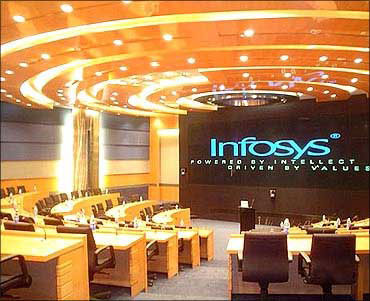
What goes into a) systematising the grooming process; b) identifying future leaders; c) evaluating gaps in skills, if any; d) developing a mentoring plan, etcetera?
Earlier in this interview, I had identified our individualised counselling process to systematically diagnose our leader's needs, and customise solutions based on standard portfolios.
Our systematic set of Computer-Adaptive 360 degree surveys ensure fair, objective and evidence-based ways of identifying people with potential.
The same computer-adaptive assessments are used to evaluate skills, gaps, and progress in development annually.
The aforementioned assessments are used by the ILI counsellor and the tier leader's mentor to develop a mentoring plan. We work with both mentors and counsellors to nurture their experience.
What matters most to the company while identifying a leader: performance, creativity, integrity, ethics while dealing with others, hard work, or commitment to excellence?
We've just completed a study looking at our leadership traits and values, and identified a combination of these that are predictive of effective leadership, in all of Infosys's markets.
Our study found that biggest factors include being open to new experiences, able to handle stress, values that strive for excellence, social skills, excellent decision-making, ambition, creative problem solving and integrity.
Click NEXT to read on . . .

Does this pool of potential leaders also have non-Indians?
Yes, it includes leaders from all over the world.
What is the mentoring process that takes place at Infosys while grooming its future leaders?
As each Tier leader is selected into our process, we at ILI assign them to a mentor who is senior to them, and outside their chain of command.
We provide a framework for both mentor and protege to mutually benefit from the relationship.
Proteges are also expected to mentor other junior people both to grow others, and as part of their own development as a leader who must grow other leaders.
Is this programme unique to Infosys or has it been based on such leadership grooming programmes that exist in some top multinationals?
We were inspired by other models from other companies that inspired many parts of our model. Some of the unique parts include our chief mentor, our unique leadership model, and our emphasis on relevance with rigor, and our original research with virtual reality, psychometrics, enterprise risk, and leadership investments.
Click NEXT to read on . . .

What are these 'nine pillars for leadership development in Infosys' that we keep hearing about?
They are the 9 behavioural areas leaders at Infosys must gain excellence: Strategic, Change, Adversity, Transition, Talent, Operational, Content, Relationship/Networking, and Entrepreneurial Leadership.
Each of our assessments is designed to assess these dimensions; as are our roadmaps devised to drive improvements in each.
Why has Infosys consistently been increasing its training budget?
I only look after the leadership development budget, a portion of which is training, focused only on the top 750 leaders.
The larger volumes are focussed on the other 115,000 employees, and led by my peer, Srikantan Moorthy. At ILI we are increasing our investments to continually support our leader's ability to win in their jobs and take their careers to the next level.
I would like to think that some of my leadership in heading ILI has helped influence them to increase their investments, but that's a better question for my boss, (director and head, admin, human resources, Infosys Leadership Institute and Education and Research) T V Mohandas Pai, as to whether that's the case.
Click NEXT to read on . . .
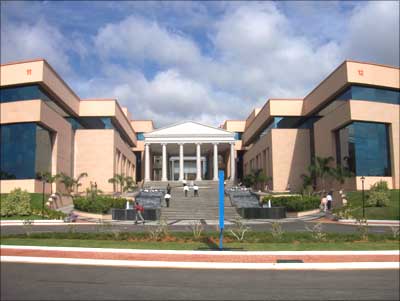
How does Infosys motivate its employees to become leaders?
We feel that individuals should want to lead -- as part of their interests and values -- and that we nurture their inherent interests with our development
How does Infosys tackle the possibility of a 'groomed leader' quitting to take up reins at some other organisation?
We do our best to create the best possible developmental support at ILI to nurture their careers here, and we hope that's one reason leaders want to stay.
Realistically, we have very successful leaders some of whom retire, or move on to do other things, but at ILI we work hard to help our senior-most leaders create an environment that inspires all leaders to take Infosys to the next level.
What are common obstacles to grooming that Indian firms typically face?
I don't consider myself an expert on Indian firms in general, as I've only worked for Infosys in this country, and most of my career has been in other geographies.